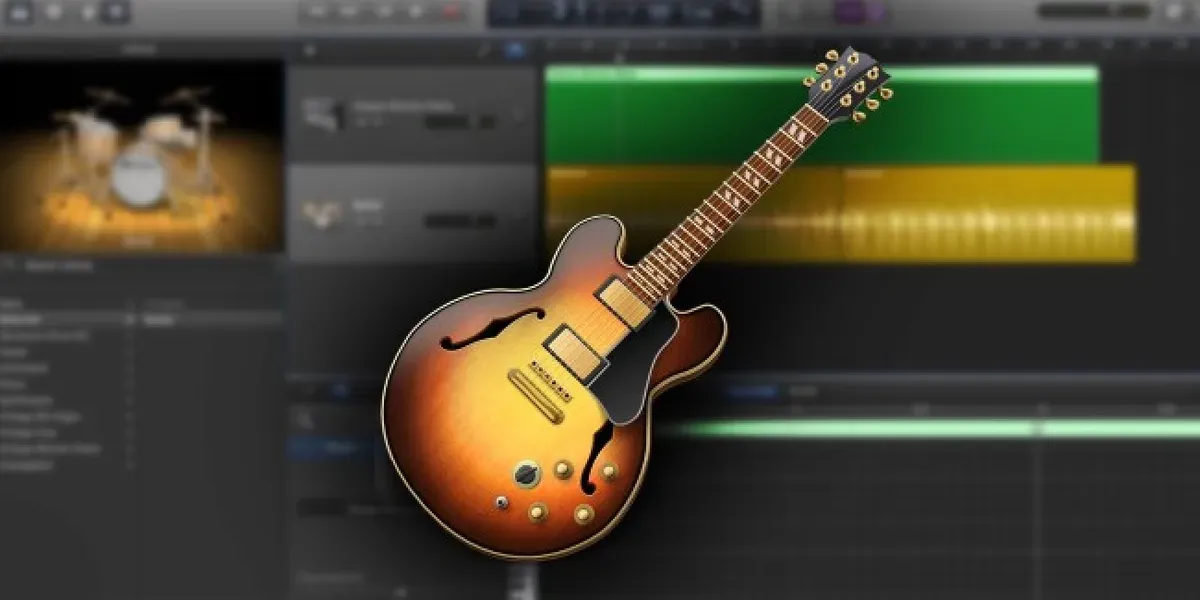Despite being designed for inexperienced musicians and producers, Garageband remains an excellent tool for creating music in 2022. Even so, if you’ve never used recording software before, there may appear to be a lot to learn, so, here is the Garageband guide.
Continue reading to know more about Garageband.
Drummer
Finally, Garageband comes with Logic Pro’s powerful Drummer plugin.
Drummer is a simple way to get human-feeling beats, loops, and percussion parts.
Instead of programming MIDI or copying and pasting loops, Drummer provides you with custom beats that you can tweak using the same language you’d use with a real musician.
Each drummer has a “personality” based on the genre they play, and they will frequently add creative drum fills and flourishes in just the right places.
Mixing
If you’ve ever mixed music with a traditional DAW or analog mixer, you’ll notice that Garageband lacks a dedicated mixer view for blending your tracks.
Some may find this off-putting, but others may prefer the simplified view because all of the important controls are visible in a single window.
You can still apply effects, adjust levels and pan positions, and change parameters on your tracks, but these options are now located at the bottom of the screen in a panel.
Plugins
In terms of plugins, Garageband includes many of Logic Pro’s well-known instruments and effects.
Drummer is a simple way to get human-feeling beats, loops, and percussion parts.
Some, such as the Space Designer Garageband edition, are stripped-down versions with fewer parameters.
Others are full editions of the originals with the same power and versatility.
You can use third-party VST plugins in Garageband just like any other DAW. The workflow is less smooth when compared to the drag-and-drop style of more mixing-focused DAWs, but you’re not limited to the stock plugin suite.
However, you may find that you don’t need to bother because the software includes a plethora of instruments and effects.
MIDI
When you record parts in Garageband with virtual instruments, you are not recording their audio output.
Instead, you’ll be inputting musical data via MIDI. If you’re unfamiliar with MIDI, think of it as the language that digital instruments use to communicate with one another.
When you record MIDI, you can edit your parts later by moving notes around on the timeline. You can even change the sound of the parts by selecting a different virtual instrument.
When you record MIDI, you can edit your parts later by moving notes around on the timeline.
Piano roll
In Garageband, you can edit MIDI using a piano roll interface. It makes it simple to change notes or transpose parts.
The quantize feature is also found on the piano roll. This editing option allows you to musically align notes to the tempo grid so that your parts play back in time.
It’s extremely useful if you’re still honing your MIDI editing skills!
Garageband Guide: Everything else
Garageband’s basic workflow is simple and straightforward.
But that doesn’t mean the app doesn’t have other features that can help your music.
Here are some more important Garageband features to be aware of.
Garageband Guide #1: Learn to play
The developer designed Garageband to appeal to both new and casual musicians.
Learn to Play and Lessons are now direct links to music learning resources in the app.
These are project files that can teach you basic instrument skills, music theory fundamentals, and songs by well-known artists.
While downloading Artist Lessons costs money, Basic Piano, Basic Guitar, and Chord Trainer are all free.
These educational resources are ideal for those who want to improve their music while also learning how to record.
Garageband Guide #2: iCloud and iOS
Garageband has an iOS companion app that allows you to create music on your phone or tablet.
Not only will you be able to make music on the go, but you’ll also be able to control Garageband with your mobile device’s touch interface.
Working with this type of tactile control may be more enjoyable for you.
Garageband has an iOS companion app that allows you to create music on your phone or tablet.
Finally, You can move Garageband projects seamlessly between the desktop and mobile apps, giving you the best of both worlds.
To try it out, go to the share menu and select the Project to iOS option.
This tool, like many other Apple products, is integrated with the iCloud file storage service.
In the garage
There are more great options for DAW software than ever before, especially for new producers.
However, Garageband was one of the first and most well-known free DAWs. There are numerous compelling reasons why it has been a fan favorite since the early 2000s.
As you begin your musical journey, the app’s current version should be at the top of your list.

